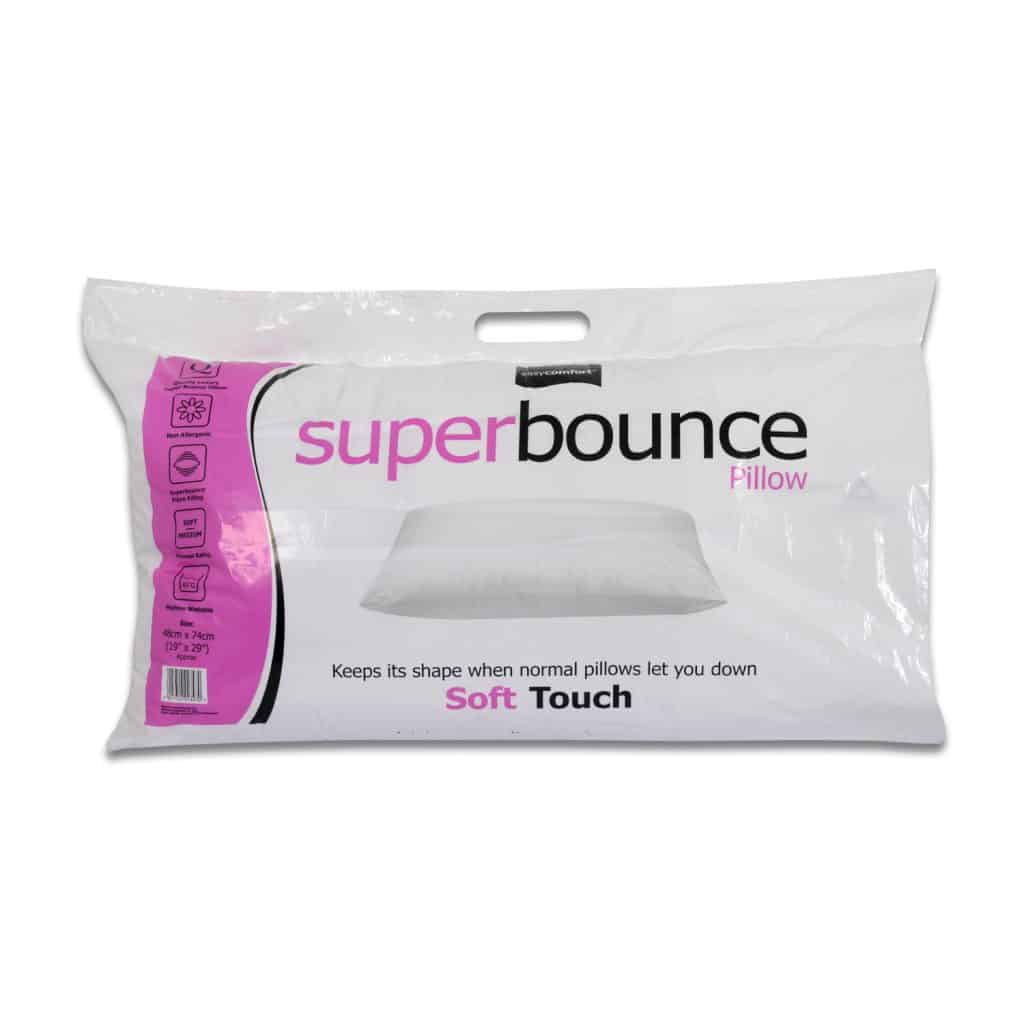Polyester Pillows
Proper Care for Bounce Pillows
People continuously shed dead skin cells and produce new ones every day. This process goes on even when we sleep at night. The buildup of dead skin cells, dust and other particles in bedding can be harmful, especially if you suffer from respiratory and skin issues such as asthma, psoriasis, eczema and allergies. This is why changing sheets and pillowcases frequently is highly recommended. Pillows must also be inspected regularly so they remain in their best condition. If you’re using bounce pillows, check out our proper care tips below.
Read Instructions
Bounce pillows are different from natural-fill or rubber (latex) pillows. Therefore, it is always important to read properly the care instructions printed on the tab. Most pillows require that you wash them at certain temperatures. Bounce pillows are usually laundered in cold water on a gentle wash setting. It’s also not advisable to use bleach on bounce pillows since it could compromise the polyester inside. Use a bit more fabric softener instead to soften the filling. Different brands require different care, so be sure to check the instructions if you decide to wash your bounce pillows.
Dry Carefully
Bounce pillows get their name from their ability to “bounce” back to their original shape when fluffed regularly. The problem arises when the polyester inside clumps together when these pillows are washed. To avoid having too many clumps, remove the pillow from the washing machine after the first spin-dry cycle. Then, shake the pillow vigorously to dislodge the big clumps. Then, put the bounce pillow back and this time, set it on the gentlest drying cycle. However, make sure that there is enough heat to dry the pillow completely. Pillows tend to harbour mould if they’re damp.
Another alternative is to air-dry your pillow. It will take longer but it is a better way to get the fluffiness and bounce back into your pillow. When air drying, check back every hour or so to fluff the pillows. This action will force air inside and dry the polyester filling more efficiently. This is an ideal drying technique during the summer. Be prepared to air-dry again the following day if your pillow is not totally dry.
How Often To Wash
How often you need to wash pillows depends on your lifestyle and hygiene habits. Some people shower before they go to bed at night so they don’t leave that many dead skin cells or dirt on their pillows and pillowcases. If you’re among them, wash your pillows once every 6 months. If you don’t shower before you go to bed, however, wash your pillows quarterly. The same is true if you are an allergy sufferer. Be sure to change pillowcases once a week to avoid too much dead skin and dust buildup on your pillows.
When to Discard
According to the Sleep Council, pillows should be discarded after two to three years of use. If you are extra sensitive or have skin disease or asthma, however, it is recommended that you change pillows every six months. This may seem like a big waste of money but pillows serve as a breeding ground for dust mites and germs that can trigger allergies. Better to be safe than sorry! Old pillows can also cause neck aches and other muscular problems, so changing your bounce pillows regularly can mean a more comfortable sleep.

